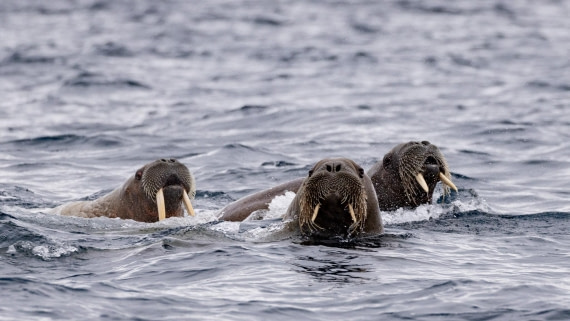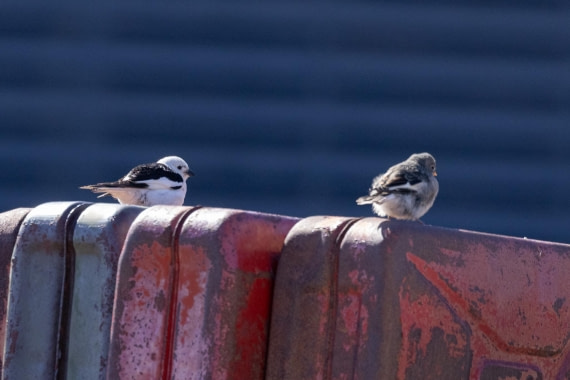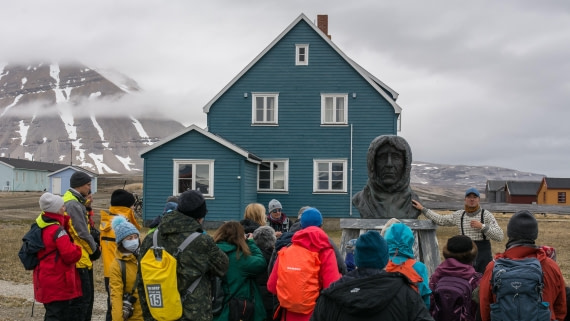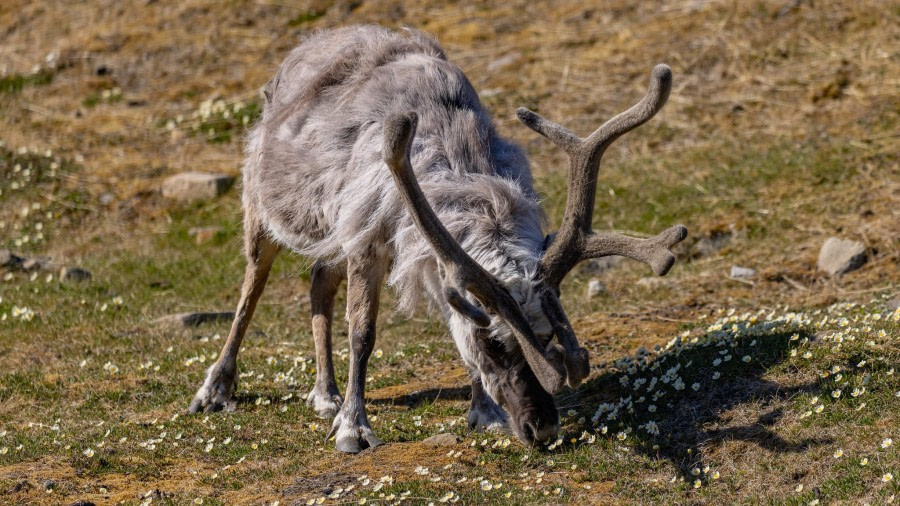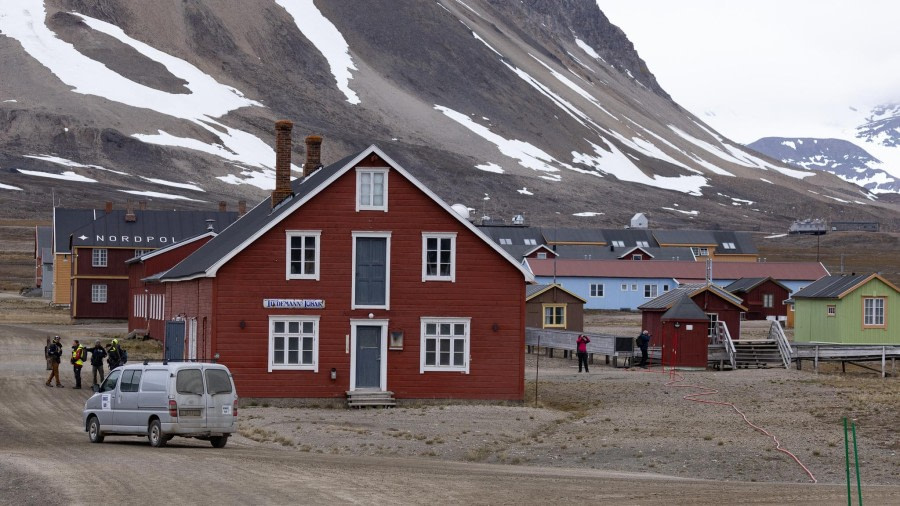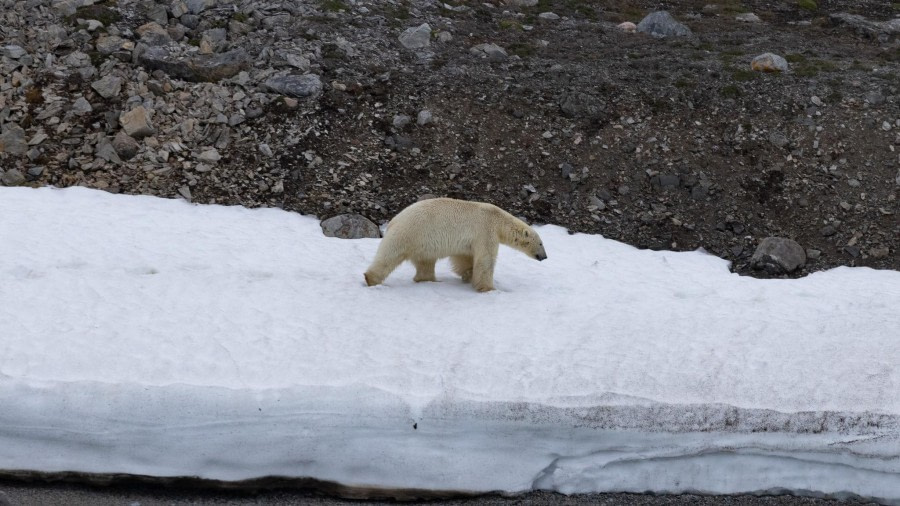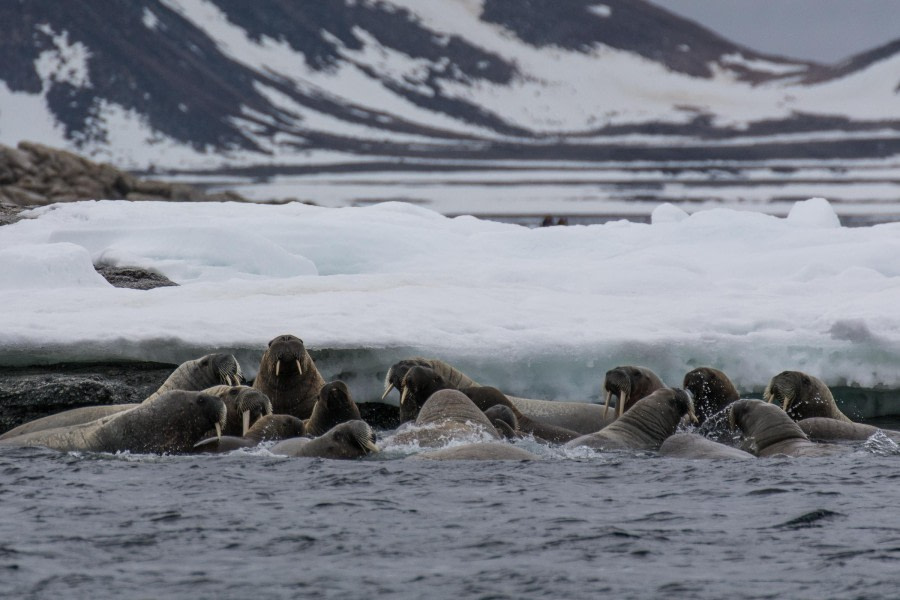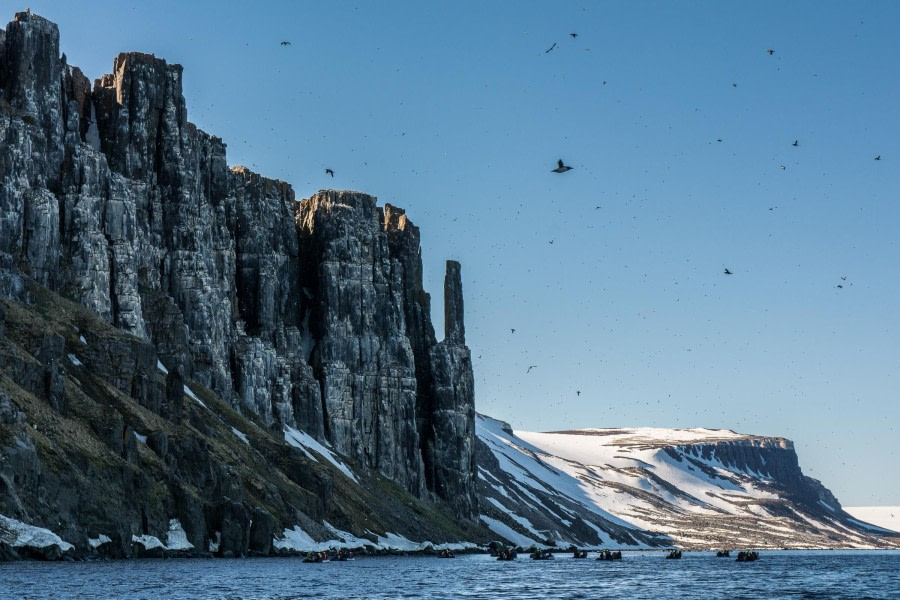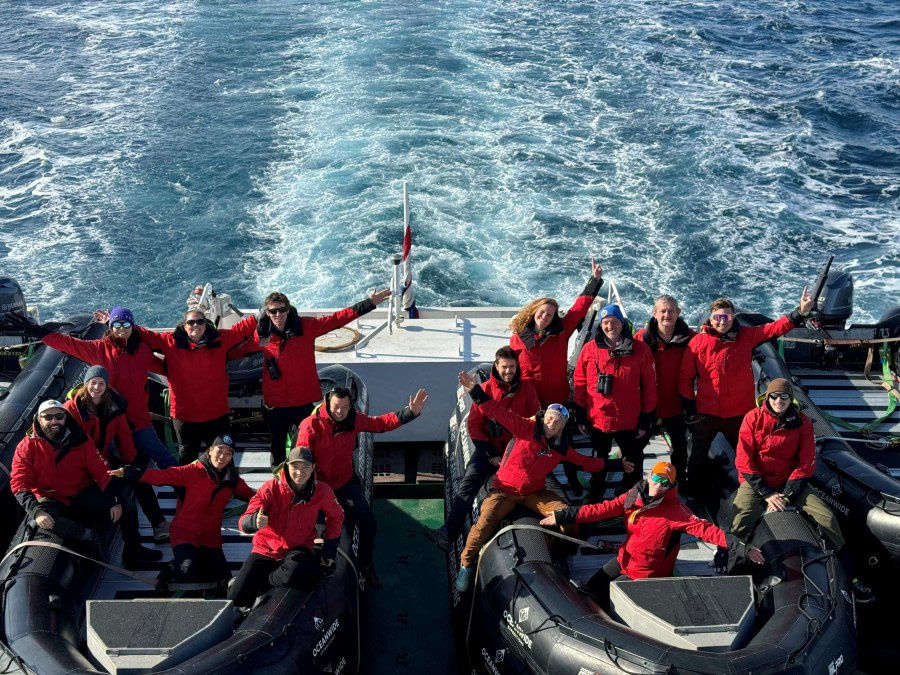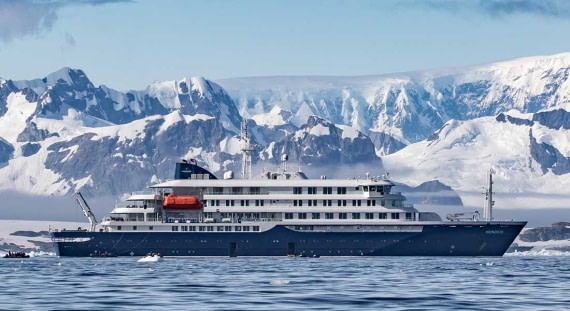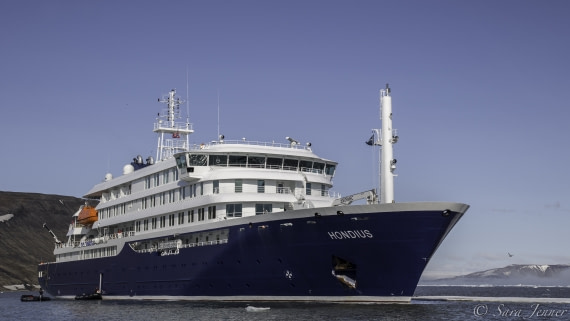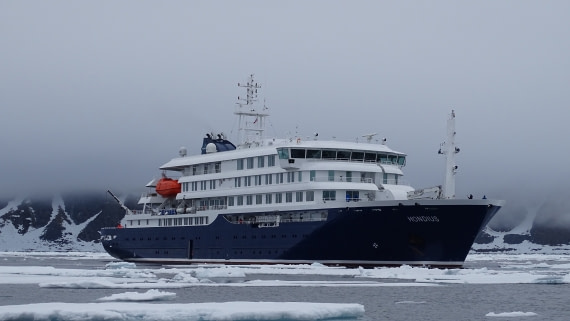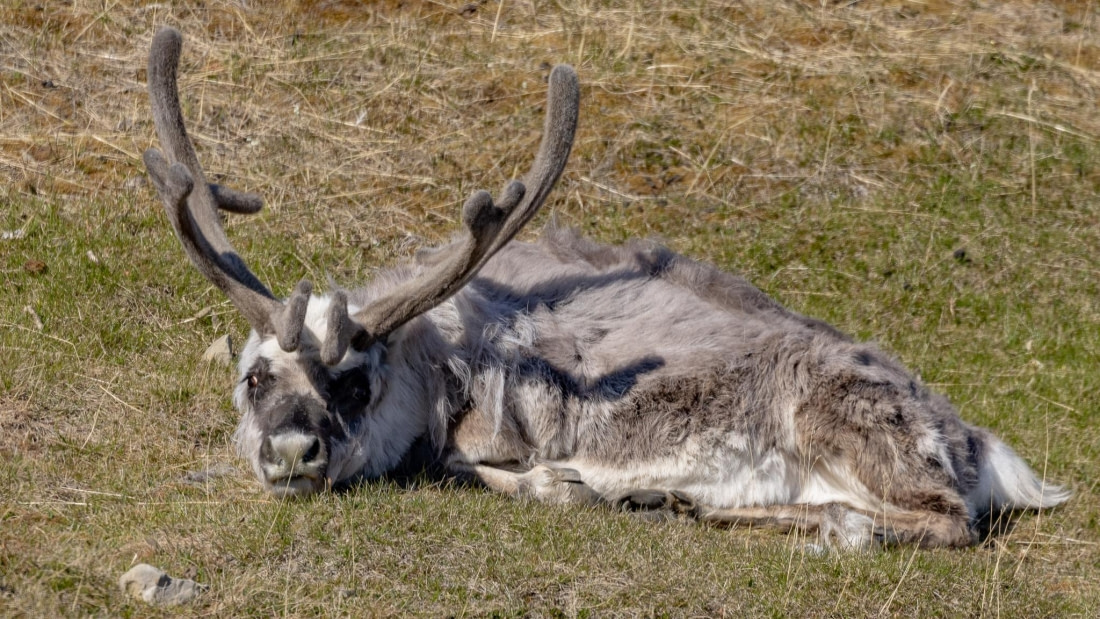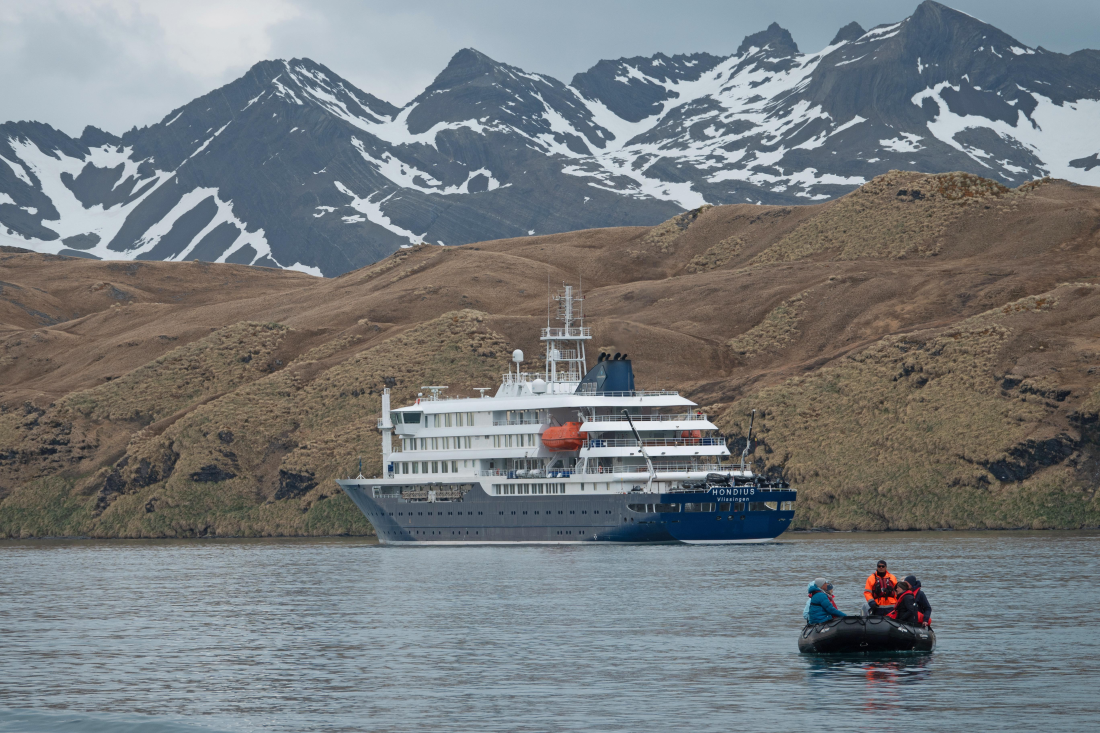| Datum: |
29.06.2024 |
| Position: |
79° 34.9’ N 18° 36.3’ E |
| Wind: |
SE4 |
| Wetter: |
Clear sky |
| Lufttemperatur: |
+4 |
We awoke early this morning as we were excited to the day was to come. Before started the activities, we all attended the restaurant for a hearty breakfast. Faksevågen, will be the landing site. Lomfjord is a side bay in the northern part of Hinlopen Strait. It is not the world's biggest fjord, but it has one lovely side bay on its western side, called Faksevågen (Fakse bay). In contrast to most other areas around Hinlopen Strait, there are green tundra areas in Faksevågen.
Some of us decided to burn some calories and took the option for a long walk. The mountain Faksefjellet, with its 360m height, is not Mount Everest, but still, the view from the top, which is decorated with a large erratic boulder, is stunning. The other groups chose to walk around the slopes and beach. Almost at the end of the operation, an alert on the radios made our hearts jumped a little bit, a Polar Bear was swimming in the water. Calmly and with a bolt professionalism, all the guides made the evacuation in just a few minutes as soon as the hikers were safely guided back from the top of the ridge. After that excitement morning, we could have the opportunity to watch the Bear from the safety of our beautiful Hondius.
Before we knew it, it was time for lunch. We enjoyed a delicious buffet before heading up to our second activity of the day. We were excited to enjoy a Zodiac cruise amongst the famous Alkefjellet, “mountain of the guillemots”. This popular Arctic location is the most famous cliff of the Svalbard archipelago.
Alkefjellet is a major bird cliff that is home to around 60,000 pairs of breeding Brünnich’s guillemots as well as a smaller number of glaucous gulls and kittiwakes. The cliffs are high and sheer and in places around 100 meters (330 feet) tall, some of them free-standing towers and others part of the main body of rock. All are impressive examples of dolerites intrusions from the Jurassic or late Cretaceous period.
We had the opportunity of seeing meltwater from glaciers creating small waterfalls that spilled down the rocks in long clear streams. The Guillemots were flying all over our heads, certainly a breathtaking scenery. When we were almost approaching the end of the cliff, an Arctic Fox made its way down the lower slopes and we had the chance to have a glimpse of how much they work for food constantly. Smiling faces in all in our zodiacs showed how much delighting and amazing our day had been so far.
We Returned to the ship to warm ourselves up and had the Dayli recap, Jerry explained about the activities of the day and the next day. Ting, teached us about lichens, and Meike all about Guillemots.
To cap off a wonderful day, our expedition team went ashore in Wahlbergøya and set up the site for us to go ashore. Wahlbergøya is the largest island in the Vaigattøyane archipelago, a group of islands in the Hinlopen Strait. The almost triangular island is about 13 km long from its northwest cape Ryggneset to its southeast cape Jåderinneset.
We just started to load the zodiacs, when through the radio the call made change our plans, the second Polar Bear of the day, was in the area. We did a zodiac cruise instead, and we had an amazing close view from a beautiful group of Walruses. With their voluminous bodies and long tusks, the outing gave us the opportunity to fill our memory cards with hundreds of pictures.
The day was over, but we stayed for hours in the lounge with the Expedition team, it had been such an incredible day that it was almost impossible to go to rest, needing to share stories and pictures.
TRAK kayaking program: Faksevågen (pm)
Another day of light winds and calm waters in Faksevågen. We left the ship at exactly 08.01 at a time when most people were finishing up their breakfasts. We took the Zodiac out to the northwest point at the fjord entrance and quickly got into our kayaks. Then we started west with a light breeze pushing us along. Kelly took advantage of the good conditions to teach us some techniques for turning the kayaks, looking at combining edging and sweep strokes. Maryse took the edging a bit too far at one point and tipped in, however she stayed in her kayak and with the support of the bow of Fran’s kayak and Kelly flipping her upright, she avoided a full swim!
After paddling to the coastal river plain at the head of the fjord we came back on the other side and just shortly before we were going to the cry went up from the front of the group “polar bear!”. Yes, a polar bear was swimming across our path about 500m distance, heading for the opposite shore. The keen eyes of Maryse spotted its creamy yellow head above the waves! How exciting. We swung into immediate action, and it was less than ten minutes before we were all safely on board the Zodiac with the kayak strung neatly behind – a credit to the calm attitude and skill of us all. Back at the ship we offloaded and our Zodiac driven by Kaitlyn made it’s way to shore to help with the landing evacuation.

